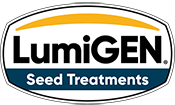Soybean Cyst Nematode Populations Across the Midwest in 2021
Written by Mary Gumz, Ph.D., Pioneer Agronomy Manager
Written by Mary Gumz, Ph.D., Pioneer Agronomy Manager
¹Average yield response based on 30 on-farm trial locations in 2015 with high SCN pressure (>450 eggs/100 cc of soil). Multi- year and multi-location is a better predictor of future performance. Do not use these or any other data from a limited number of trials as a significant factor in product selection.


Components of LumiGEN® seed treatments are applied at a Corteva Agriscience production facility, or by an independent sales representative of Corteva Agriscience or its affiliates. Not all sales representatives offer treatment services, and costs and other charges may vary. See your sales representative for details. Seed applied technologies exclusive to Corteva Agriscience and its affiliates. ILEVO® is a registered trademark of BASF.
The foregoing is provided for informational use only. Please contact your Pioneer sales professional for information and suggestions specific to your operation. Product performance is variable and depends on many factors such as moisture and heat stress, soil type, management practices and environmental stress as well as disease and pest pressures. Individual results may vary. Pioneer® brand products are provided subject to the terms and conditions of purchase which are part of the labeling and purchase documents.